Landert-Keramik pottery in CERAMICA CH
In the late 19th and throughout the 20th century, the municipality of Embrach in the Canton of Zurich had two significant pottery manufacturers: the Zangger pottery factory and art pottery and the company Landert-Keramik. Neither of the firms have yet been subject to a comprehensive historical study (so far only Stromer 1999, 162-163) and museum collections rarely include Embrach ceramics.
The company Landert-Keramik came from very humble beginnings in 1908 with pottery-making experiments. Heinrich Landert (? – 1950) set up a pottery workshop with a kiln in the basement of his home. He had learnt the craft in Gottlieb Zangger’s art pottery. Landert officially established the company in 1909 and set up a small workshop. The Swiss Official Gazette of Commerce (SOGC) listed his firm for the first time on 29th October 1917 (SOGC 35,1917, 1732 No. 256). In this listing, Heinrich Landert was identified as the owner of a mechanical pottery workshop in Unterembrach.

The workforce initially consisted of himself and his brother Emil (?-1948) and their children who served as assistants. By the outbreak of the First World War, the company had grown to as many as five or six employees, and a new kiln and a press for making flowerpots had been installed. The clay used was extracted from the company’s own pits in the Bilg, Wagenbrechi and Riederen (Rorbas) areas.

Between 1920 and 1934, the company had a second branch in Winterthur (SOGC 38, 1920, 217 No. 32; 52, 1934, 2738, No. 232).

New electric kilns introduced around 1930 resulted in a significant improvement in production lines, which at the time consisted mainly of everyday crockery, butter pots and spouted dishes to separate cream from milk. Landert also installed electric kilns at other workshops. The company became so successful that an electric tunnel kiln was added in 1938. The Second World War reduced the number of rival companies abroad and resulted in a significant upturn for indigenous industry in general. Landert, too, was able to expand his firm several times between 1941 and 1945. At that time, staff members numbered more than 70.

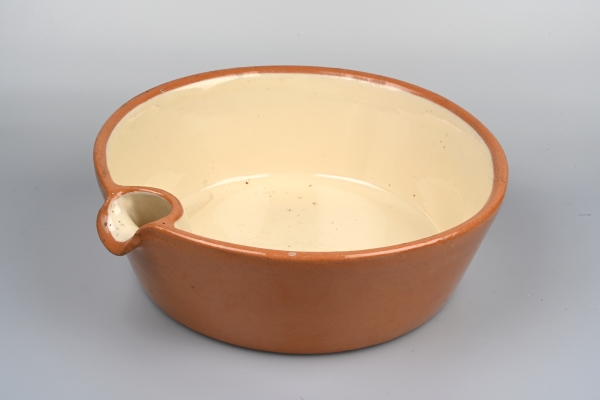
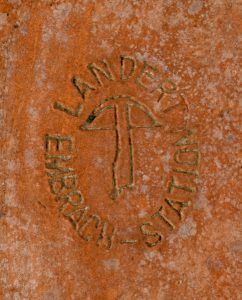
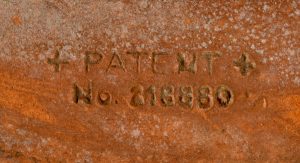
In 1941 Landert patented a cream separator (SOGC 60, 1941, 280, No. 29), examples of which are quite often found in museum collections in the Canton of Graubünden.
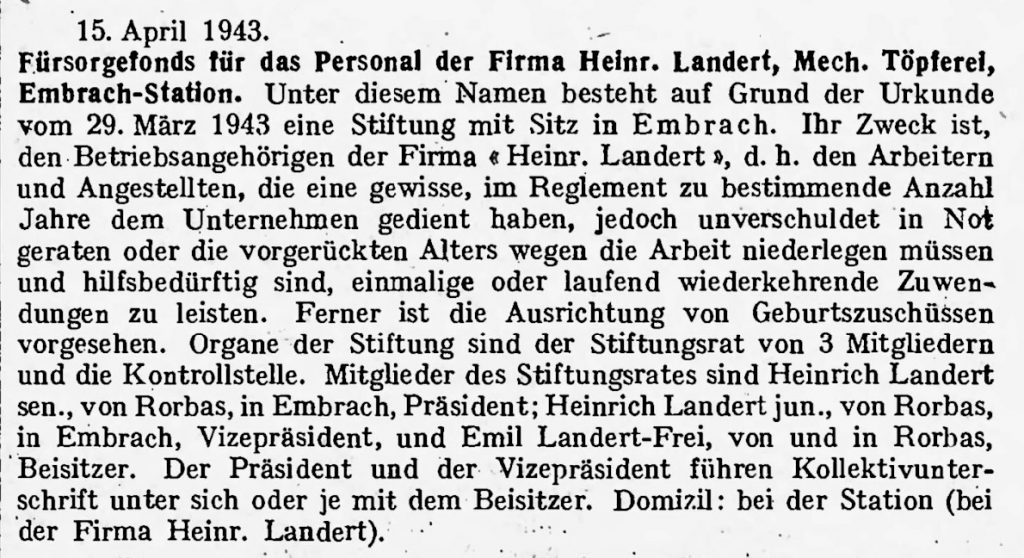
In 1943, a staff welfare fund was set up (with Heinrich Landert senior as president) and on 8th July, the first company mark was registered in the Swiss Official Gazette of Commerce.
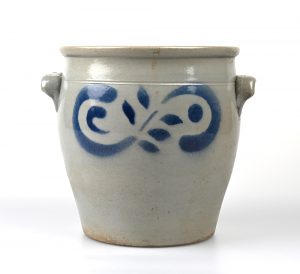

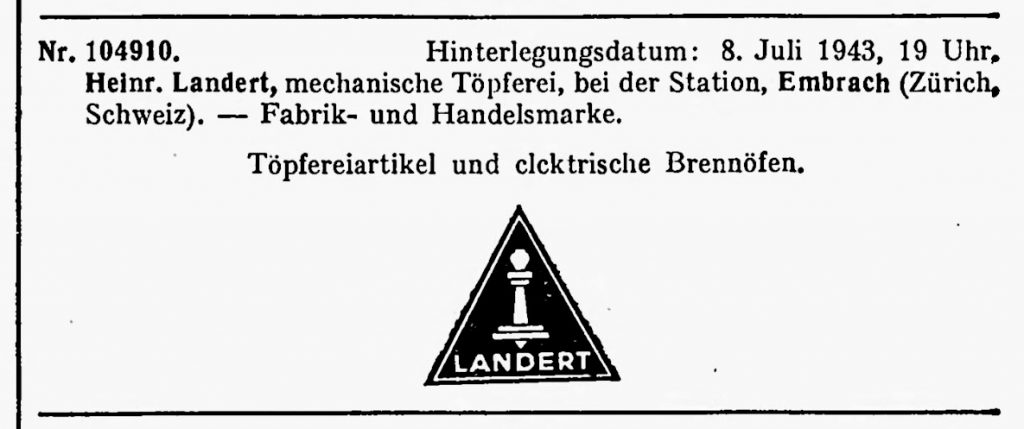

After Heinrich Landert I died in 1950, the company was registered as a limited partnership (SOGC 68, 1950. 2857, No. 61) (Landert & Co.). Heinrich Landert II (? – 1982) and Walter Landert were two of the partners together with other family members. In 1960, Heinrich Landert III was also added as a partner with unlimited liability (SOGC 78, 1960, 202 No. 171).

From 1st January 1978, the private limited partnership became a public limited company called “Töpferei Landert AG” (SOGC 96, 1978, 2765, No. 207).

In 1982, Heinrich Landert II died and his brother Martin became vice president of the plc (SOGC 100, 1982, 4121, No. 301.
rom the 1970s to the 1990s the company found its niche in the production of domestic pottery, and especially of fondue crockery, which was very elaborately hand-decorated. From 1969 onwards, the Luzerner Keramik company purchased biscuit-fired unmarked fondue skillets from the Heinrich Landert company in Embrach, which they then decorated with the Lucerne “décor 210”. This meant that they could now offer high-quality complete fondue sets (information provided by Margret Loder, Ebikon). Franz and Margret Loder had met Heinrich Landert III at the Swiss School of Pottery in Bern and they remained friends for the rest of their lives. The first collaboration between the two companies occurred as early as 1945, when they produced a jug-and-beaker set for the Lucerne male voice choir:
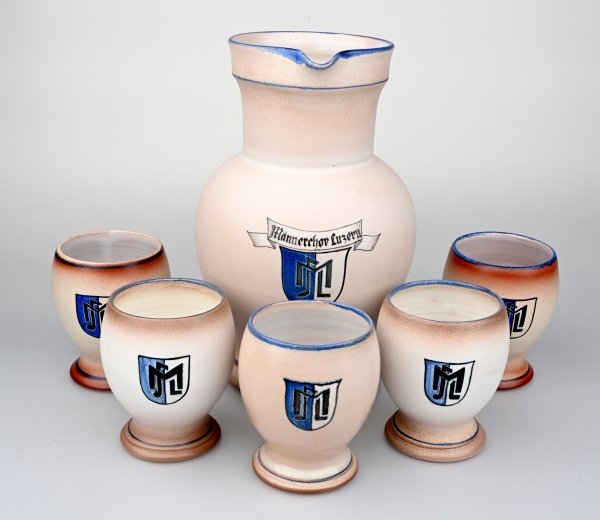

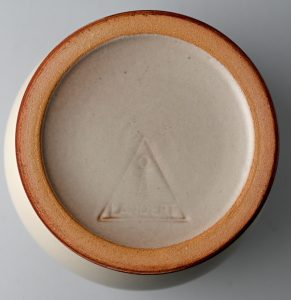
By 1996 the company “Töpferei Landert AG” had gotten into financial difficulty, prompting Christoph and Hanspeter Landert to set up a new public limited company in 1997 called “Landert Keramik AG” (SOGC 115, 1997, 721 No. 21.
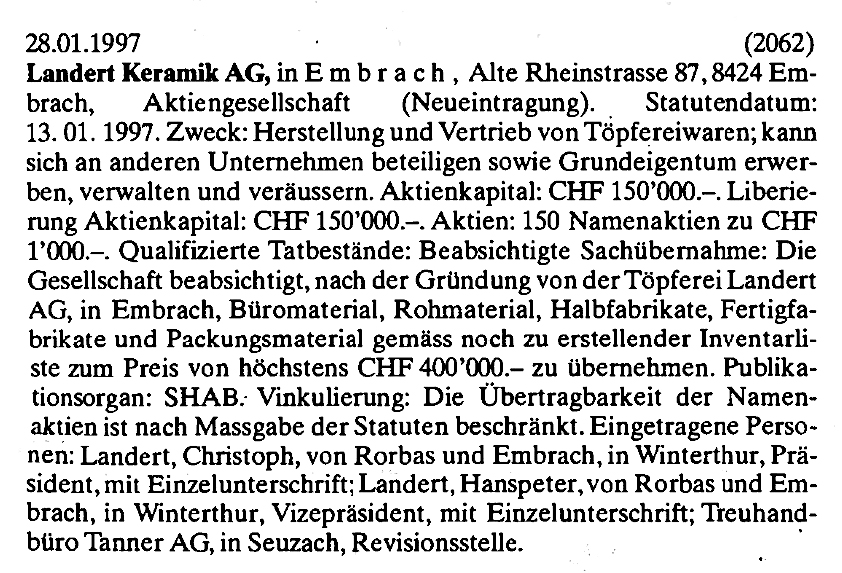
That same year, production was outsourced to Slovakia. In 2005, production in Embrach recommenced with workers from Hardundgut (which was a workshop set up and run by a psychiatric clinic). Supported by four social workers, Landert Keramik AG employed people with psychiatric needs until 2009. In February 2010, production finally ceased and the public limited company was sold (on 18th March 2010).
So far, the range of vessels by Landert-Keramik that has survived in museum collections is very small. The numerous cream separators that bear the mark “LANDERT EMBRACH-STATION” with a crossbow, were mentioned above. The “crossbow” mark was introduced by Swiss Label in 1917 and began to be used by the Verband für Inlandsproduktion (Society for Indigenous Production) in 1931 (SOGC 49, 1931, 1086). That was probably when it began to be used by Landert-Keramik too, and it is this mark that allows us to associate yet another type of vessel with Embrach.
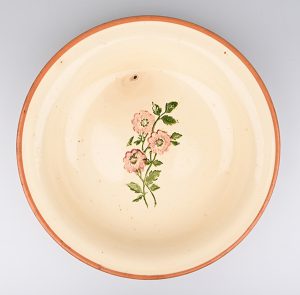
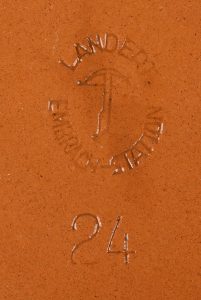
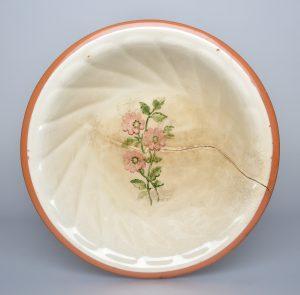
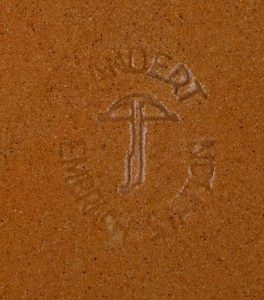
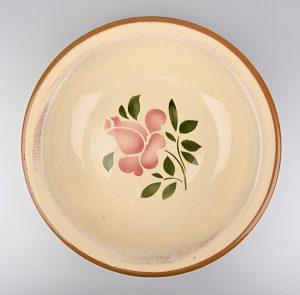

Its highly characteristic decorative motifs were either rubber-stamped or air-brushed using stencils.
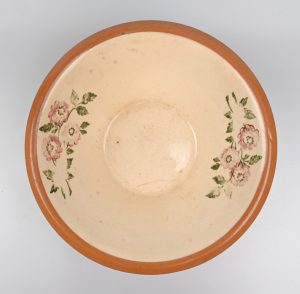
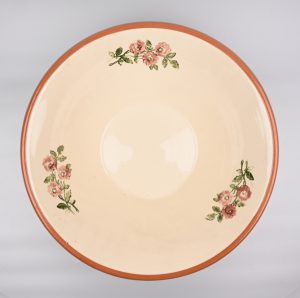
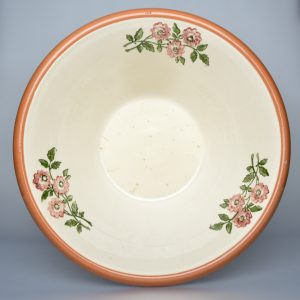
The motifs are so characteristic that even unmarked pieces can unmistakably be attributed to the company.
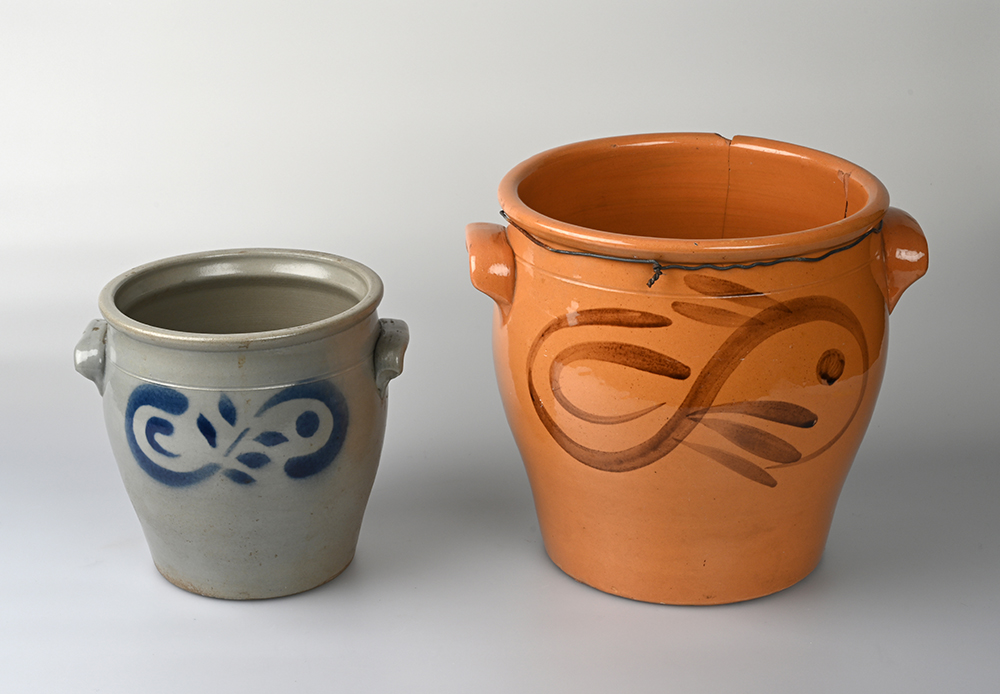
The later objects, including these two-handled preserving jars, all bear a mark that was not introduced until 1943.
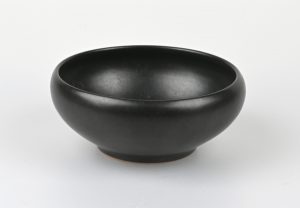
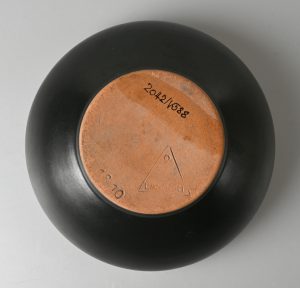
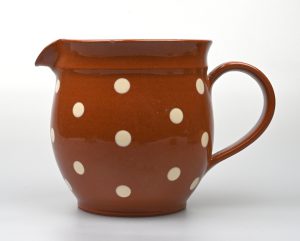

Ceramics produced by Landert without a specific date.
Landert, Embrach in the Verzeichnis Schweizer Keramiksignaturen
Films on pottery production in Embrach
Translation Sandy Haemmerle
References:
Markus Stromer, Geschichte der Gemeinde Embrach, Bd. 2., Das 19. und 20. Jahrhundert, Embrach 1999, 162-163.

